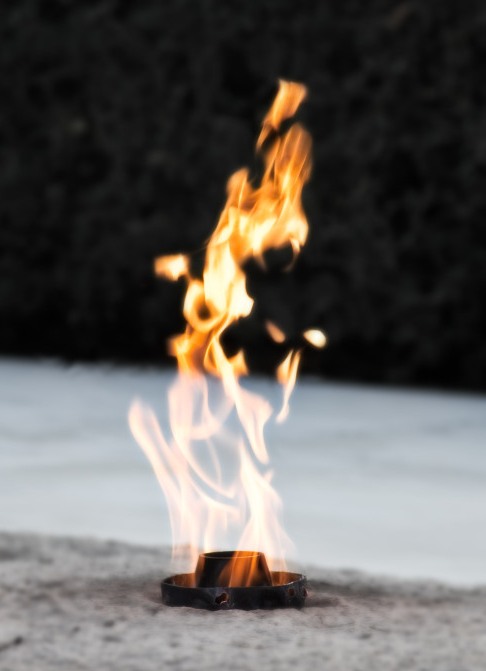In April of 2010, Sarah Palin, the former (part-time) Alaska governor and 2008 Republican Party vice-presidential nominee, told the Women of Joy conference in Louisville, Kentucky, “God truly has shed His grace on thee – on this country. He’s blessed us, and we better not blow it.” She was criticizing the notion of separation of church and state; a tenet essential to the establishment of the United States. She insisted, as right-wing evangelicals do, that this is a Christian nation; founded on biblical principals. If that’s the case, then her oldest daughter, Bristol, should be stoned to death for getting drunk, having sex out-of-wedlock and giving birth to an illegitimate child. That Bristol went on to condemn gay marriage – even though she and her baby’s father never could set a wedding date – is typical of conservative hypocrisy.
If Palin, or anyone else in her camp, were so concerned about the application of Christian ideology, then they should look at the startling rise in both poverty and food insecurity in the U.S. Food banks have been running low on supplies and are working (even more than ever) on shoestring budgets. To worsen matters, President and Obama and the U.S. Congress made cuts to Supplemental Nutrition Assistance Program (SNAP). A family of 4 could lose on average $36 monthly in food assistance. It’s even more astounding when you consider that many of these families are not welfare brats, but among the “working poor” – a new class of individuals created almost involuntarily in the past decade. These are the people who haven’t benefited from “trickle-down economics.” Capitalism hasn’t functioned quite so well for them. In the late 1990s, more people moved up out of poverty than ever before in this nation’s history. But, thanks to the incompetence and corruption of the Bush Administration, practically all those gains have been lost.
It’s, of course, the skewered tax policies the Bush Administration instituted, beginning in 2001; a financial structure retrofitted to favor the wealthiest individuals and largest corporations. Coupled with the wars in Afghanistan and Iraq and the almost complete deregulation of the financial and housing industries, and it shouldn’t be too surprising that the U.S. is still in the grips of the worst economic downturn in 80 years.
While conservative extremists are obsessed with injecting creationism into science curriculums in schools and stopping queers from getting married, my biggest worry is the number of people who struggle daily with food insecurity. As much of the U.S. winds down the Thanksgiving holiday with bloated meals, hectic travel schedules and “Black Friday” shopping excursions, here are some sobering statistics, as of 2012, about the state of many kitchens across the land.
Food Insecurity and Very Low Food Security:
- In 2012, 49.0 million Americans lived in food insecure households, 33.1 million adults and 15.9 million children.
- In 2012, 14.5% of households (17.6 million households) were food insecure.
- In 2012, 5.7% of households (7.0 million households) experienced very low food security.
- In 2012, households with children reported food insecurity at a significantly higher rate than those without children, 20.0% compared to 11.9%.
- In 2012, households that had higher rates of food insecurity than the national average included households with children (20.0%), especially households with children headed by single women (35.4%) or single men (23.6%), Black non-Hispanic households (24.6%) and Hispanic households (23.3%).
- In 2011, 4.8 million seniors (over age 60), or 8.4% of all seniors were food insecure. [1]
- Food insecurity exists in every county in America, ranging from a low of 2.4% in Slope County, ND to a high of 35.2% in Holmes County, MS.[2]
Overall, the U.S. sported a rate of 14.7% for households with food insecurity. Following are the top 10 states that exhibited statistically significant higher household food insecurity rates than the U.S. national average, which is from 2000 – 2012 in this study: [3]
Mississippi 20.9%
Arkansas 19.7%
Texas 18.4%
Alabama 17.9%
North Carolina 17.0%
Georgia 16.9%
Missouri 16.7%
Nevada 16.6%
Ohio 16.1%
California 15.6%
Use of Emergency Food Assistance and Federal Food Assistance Programs:
- In 2012, 5.1 percent of all U.S. households (6.2 million households) accessed emergency food from a food pantry or soup kitchen one or more times. [4]
- In 2012, 59.4 percent of food-insecure households participated in at least one of the three major federal food assistance programs – Supplemental Nutrition Assistance Program (SNAP; formerly Food Stamp Program), The National School Lunch Program, and the Special Supplemental Nutrition Program for Women, Infants, and Children (WIC). [5]
- Feeding America provides emergency food assistance to an estimated 37 million low-income people annually, a 46% increase from 25 million since Hunger in America 2006.[6]
- Among members of Feeding America, 74% of pantries, 65% of kitchens, and 54% of shelters reported that there had been an increase since 2006 in the number of clients who come to their emergency food program sites. [7]
If the U.S. and all other democratic societies are serious about strengthening themselves, they’ll spend less money on wars against foreign nations and homosexuals and more on the real threats to stability: hunger and poverty. Otherwise, “The Hunger Games” won’t be as much a movie as a way of life.
- Ziliak, J.P. & Gundersen, C. (2013.) Spotlight on Food Insecurity among Senior Americans: 2011. National Foundation to End Senior Hunger (NFESH).
- Gundersen, C., Waxman, E., Engelhard, E., Satoh, A., & Chawla, N. (2013). Map the Meal Gap 2013, Feeding America.
- Coleman-Jensen, A., Nord, M., & Singh, A. (2013). Household Food Security in the United States in 2012. USDA ERS.
- Ibid.
- Ibid.
- Cohen, R., J. Mabli,, F. Potter & Z. Zhao. (2010). Hunger in America 2010. Mathematica Policy Research, Feeding America.
- Ibid.
- U.S. Department of Labor.Bureau of Labor Statistics. 2012 Annual Average Unemployment Rates.

















